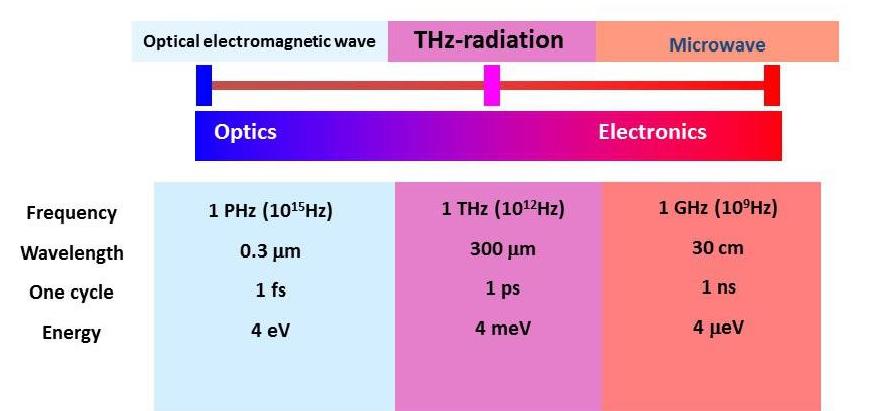THz
Terahertz radiation also known as submillimeter wave (0.3 mm), terahertz wave (1 THz), far-infrared (33 cm-1), or low energy radiation (4 meV) THz can be found between the optical and microwave regime of the electromagnetic spectrum (see figure 1). This is sometimes also referred to as the terahertz gap, where its generation, detection, and manipulation is still in its infancy compared to its neighboring frequency regimes. It’s frequency is quiet too high to be measured or detected digitally via electronic means. Similarly its generation of coherent electromagnetic signals in this frequency range is also very difficult using conventional electronic devices therefore necessitating development of schemes and devices.

Since terahertz radiation falls in between infrared radiation and microwave radiation in the electromagnetic spectrum, and it shares some properties with each of these. Like infrared and microwave radiation, terahertz radiation travels in a line of sight and is non-ionizing. Like microwave radiation, terahertz radiation can penetrate a wide variety of non-conducting materials. Terahertz radiation can pass through clothing, paper, cardboard, wood, masonry, plastic and ceramics. The penetration depth is typically less than that of microwave radiation. Terahertz radiation has limited penetration through fog and clouds and cannot penetrate liquid water or metal.[1]




